"I found I could say things with color and shapes that I couldn't say any other way - things I had no words for."
Georgia O'Keeffe
We love teaching shapes to kids – look, it’s a circle! Ooh, a triangle! We often give kids popsicle sticks to create shapes, and we even have toys that are called shape sorters. But how to teach shape to a Kindergartener is different than teaching it to a 6th grader.
First, let’s talk about what shape is, and how it differs from form.
When we’re talking Shape, we’re talking 2D. We’re talking circles and squares, but we’re also talking about shapes like raindrops. When we’re talking Form, we’re talking 3D. We’re talking about shaping a 3D object with our hands, or painting one in a way with light and shadow that makes the object look 3D.
You can see how to paint an apple with form HERE in our third in the series: FORM.
But shape is more than drawing a circle. It’s learning to recognize how they are created, how we can use them to make other things, and how to look at something like a lion and break it down into those simple shapes in order to help us increase our drawing and painting skills.
So let’s dive into the Element of Shape and how to teach shape and at what ages.
To celebrate our new PEP Curriculum – all about the Elements of Art & Principles of Design, we’re taking a deep dive into the different ways that we can teach these ideas to kids – so that they’re fun for kids – AND fun for you. We’ve broken down the ages and stages the way we do in our Glitterbombers membership, by Beginner, Intermediate, and Advanced skills.
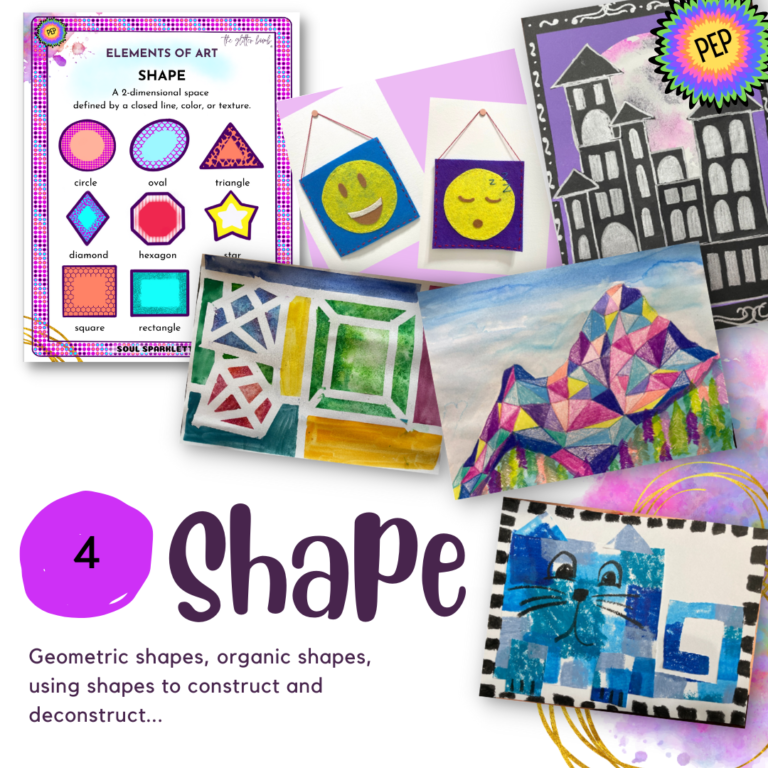
How to Teach Shape Ages & Stages: What to Teach and When
🟢 Beginner (K-2nd)
- Creating simple shapes and starting with simple shapes
- Deconstructing and reconstructing shapes
- Creating more complex subjects from simple shapes
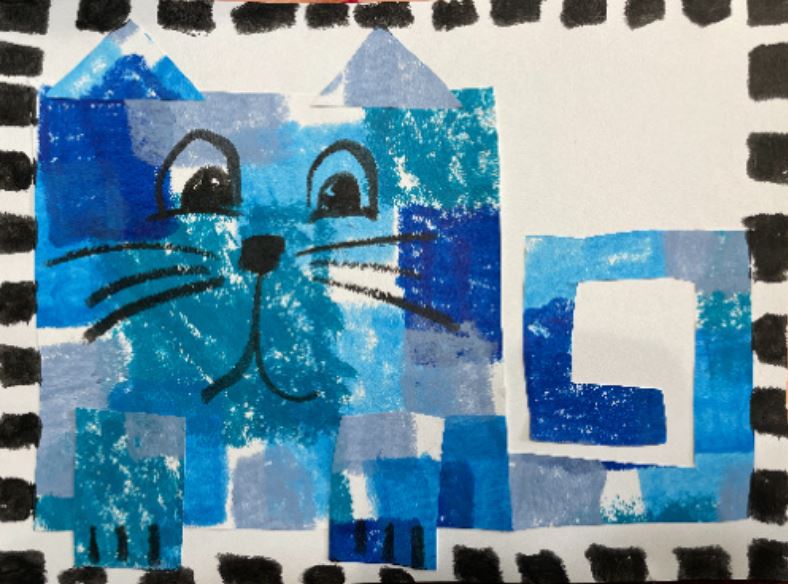
🔵 Intermediate (3rd-4th)
Kids know their basic shapes, so now it’s time to have fun with different ways to create them. Creating with materials such as washi tape and having them look for the shapes created, challenges them.
In the gemstone sample below, students may initially see the emerald and diamond shapes, but then they can also notice that the space inside can be a trapezoid or a triangle!
In these grades, students can start looking at the world around them and noticing that everything around them can be made of shapes. One of the easiest ways for students to recognize shapes is through architecture.
They can also start to understand that even a leaf can be a shape, but these shapes are called organic.
In these grades, students can:
- Create shapes using positive and negative space
- Sculpt with shapes
- Use shapes to create architecture
- Understand geometric vs organic shapes
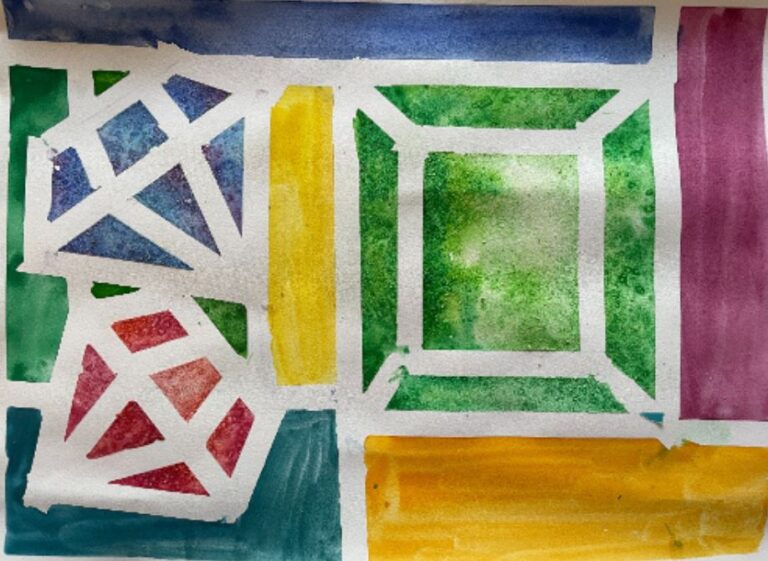
🟣 Advanced (5th-7th)
Children have a grasp of basic geometric shapes, more complicated polygons, and even organic shapes. Now they can explore how to use shapes in their own personal artmaking.
One thing they can explore is taking shapes outside of the painting and drawing spectrum, and into fiber arts. They can work with felt, or learn basic sewing and embroidery.
Up until now, kids have used shapes to build, and now is a great time to look at the space in and around the shapes. Can we fill them? Can we add things to them to make them more 3D and have more form?
In older grades, students can dive into the following:
- Use shapes in fiber arts
- Use shapes to create light and shadow
- Fill a shape by using the entire space
- Compare and contrast organic and geometric shapes
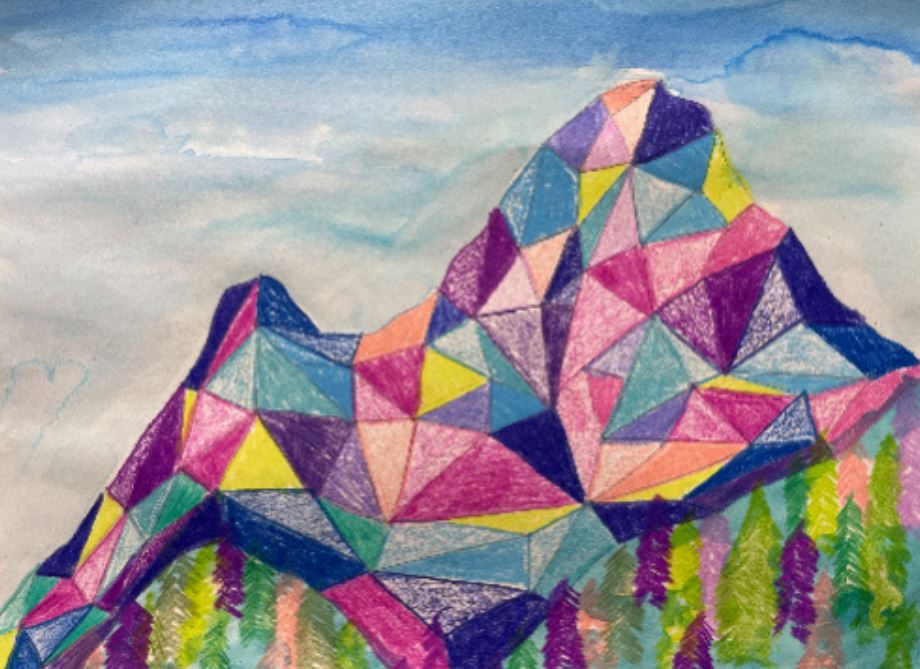
5 Books for Teaching the Element of Shape
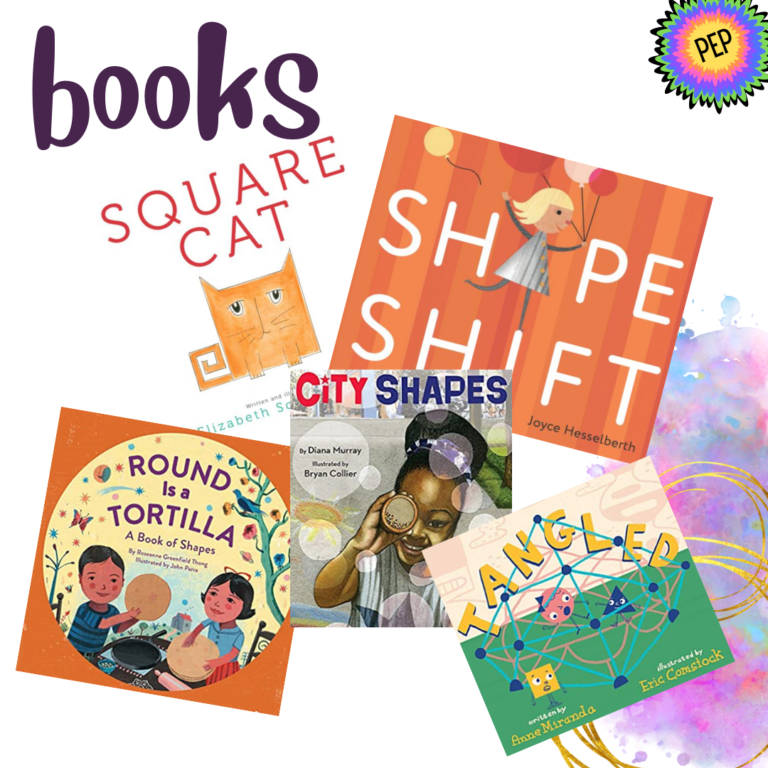
Here’s 5 of our favorite books for teaching shape (there’s more inside our PEP Curriculum inside the Glitterbombers membership). These are Amazon afflinks which means we earn a small percentage that goes towards coffee at no additional cost to you.
Ready to add Shape to your Curriculum?
Try our FREE Stanley Bermudez Washi Tape Shapes art project These shapes are sure to please, and students can glue them down or add a brad to make them move, and hide!
Or from The Glitter Bomb Shop, you can purchase the Shape Castle Silhouette. This project is from our Into the Dark bundle and shows how to deconstruct and then use shapes to construct a castle of their choice. It also teaches kids how to create a beautiful full moon background!
Join the Glitterbombers Membership!
You’ll find hundreds more art projects, videos, and resources at your fingertips for whatever you’re studying, or whatever art concept you’re ready to teach. Head here to hop on the waitlist and find out when we open next!


